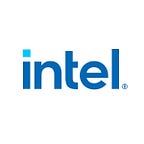A Breakthrough Decades in the Making: Intel’s Co-packaged Optics Demonstration
Authors: Dr. Ann Kelleher, Executive Vice President and General Manager, Technology Development (TD), and Dr. Babak Sabi, Senior Vice President and General Manager, Assembly & Test Technology Development (ATTD)
Today in the opening keynote at Intel Innovation, we demonstrated a key breakthrough in photonics — a crucial step in enabling the further reach of optics into the computing environment. We would like to provide a little bit of context around that moment in the keynote and explain why we are so excited about this milestone.
Optics have been delivering high bandwidth density to and within the rack for some time now, but to date have stumbled with the ‘last step’ — directly into the processor[1]. Because of the technical difficulties in bringing fiber to the package, the industry has had little choice but to use lower bandwidth density electrical signals over copper to reach the processor. Yet, in a world that needs higher bandwidth for computing, and as systems collapse into advanced packaging, the need for co-packaged optics has taken on great importance.
Many in the industry, including Intel, had been working on techniques that involved permanently gluing the fibers into a package at the very end of the assembly process. While some managed to overcome the technical challenges of placing and gluing fibers at the needed precise locations, the chances of misalignment increased exponentially with the number of fibers. In this fiber-last process, those misalignments resulted in the entire package being thrown out. As a result, the industry had no practical path to scale to high-volume manufacturing using these techniques.
A detachable connector that could perfectly align each time would eliminate these issues. As the light waveguides were typically built inside the package long before the connector was added, complete alignment was extremely inconsistent and difficult to achieve. These connectors also proved to be bulky and top-mounted, interfering with packaging components like heat spreaders, and requiring the light to be bent around to enter the package. Alternate approaches required proprietary silicon IP embedded inside the package.
At Intel, our engineers devised an innovative way to ensure complete alignment in a small form detachable connector, smaller than a USB-C, that connects to the side edge of a package. Light can be transmitted into and out of a package via specially crafted glass waveguides, with comparable losses to other co-packaged optics approaches. This solution is compatible with any standard industry photonic integrated circuit (PIC) and with any 2D, 2.5D, or 3D packaging, for example, EMIB or Foveros.
What we demonstrated today at Intel Innovation was a live test of engineering parts with our scientists in their bring-up lab. There is more to do before we realize our end goal of bringing this technology to market and enabling end-to-end optical connections. Crossing this barrier is a milestone technological achievement we want to celebrate with everyone. Even though the connector had just arrived in our labs, this achievement was so exciting, we couldn’t resist the opportunity to share it. Our imaginations run wild with the possibilities for our customers and all of humankind: massive bandwidth, more energy-efficient systems, new system architectures, new applications to better understand our world and bring solutions — medicine, sciences, engineering, weather prediction… the list is long). Isn’t that wonderful?
For more information:
Notices and Disclaimers:
Performance varies by use, configuration and other factors. Learn more at www.Intel.com/PerformanceIndex
No product or component can be absolutely secure.
Your costs and results may vary.
Intel technologies may require enabled hardware, software or service activation.
All product plans and roadmaps are subject to change without notice.
© Intel Corporation. Intel, the Intel logo, and other Intel marks are trademarks of Intel Corporation or its subsidiaries. Other names and brands may be claimed as the property of others.
